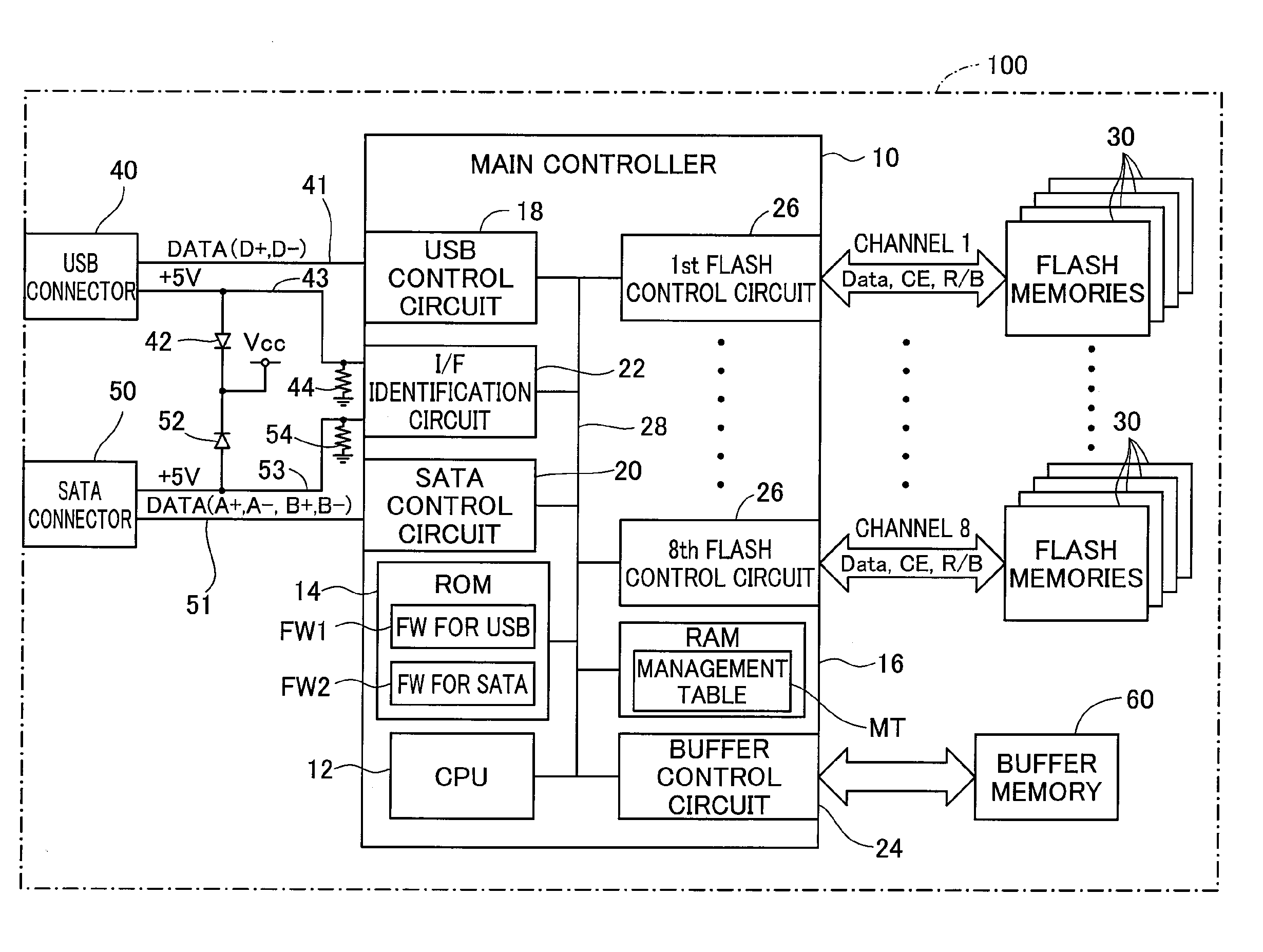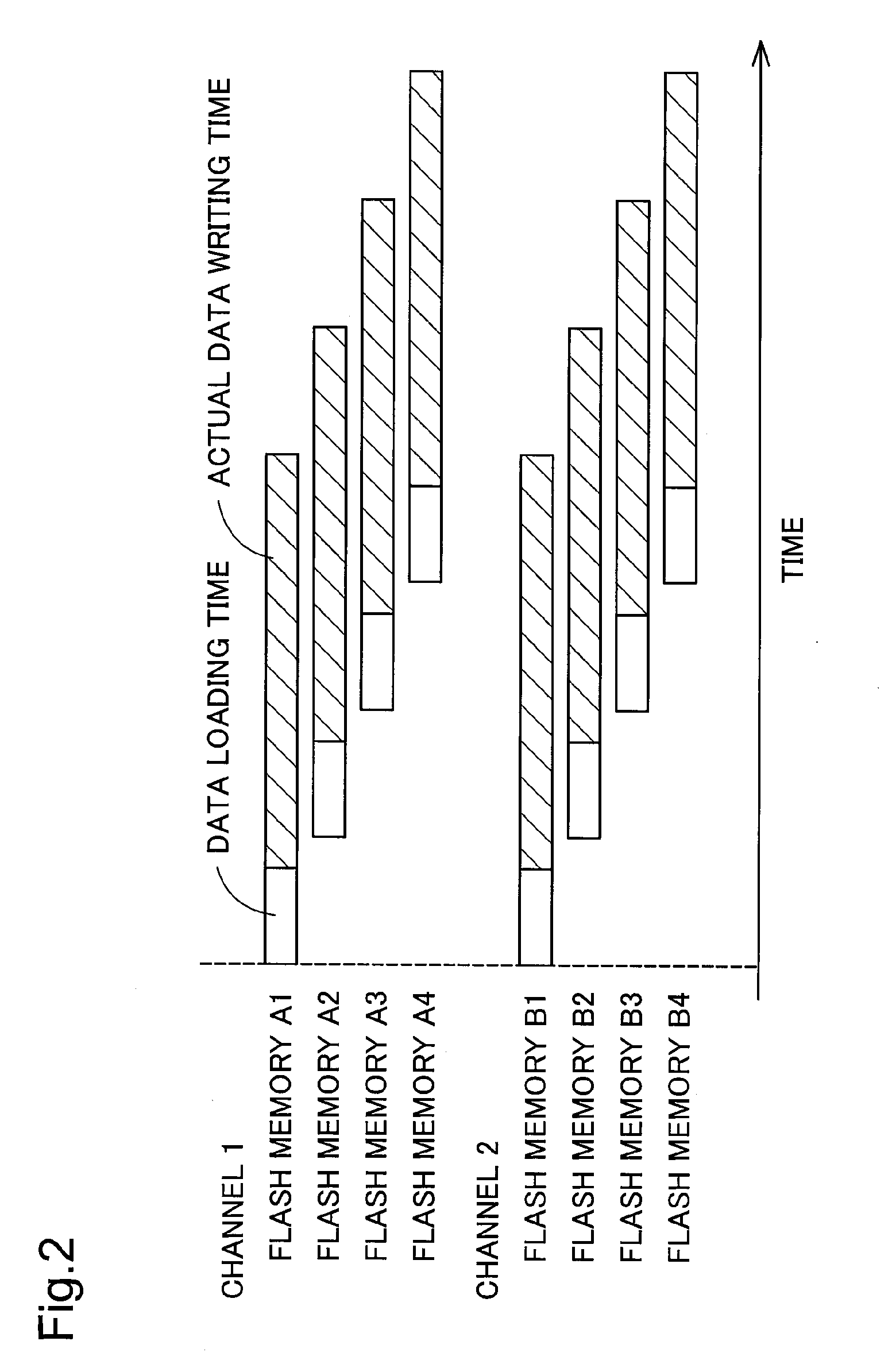Storage device
a storage device and a technology for liquid/fluent solids, applied in the direction of sustainable buildings, liquid/fluent solid measurements, instruments, etc., can solve the problem of non-working storage without, and achieve the effect of preventing an increase in power consumption
- Summary
- Abstract
- Description
- Claims
- Application Information
AI Technical Summary
Benefits of technology
Problems solved by technology
Method used
Image
Examples
first embodiment
A. First Embodiment
[0038]FIG. 1 is an illustration depicting the configuration of an SSD according to a first embodiment of the invention. The SSD 100 of this embodiment is configured as a secondary storage device used in connection with a host device (not shown), such as a personal computer. The SSD 100 includes a main controller 10, multiple flash memories 30, a USB connector 40, an SATA connector 50, and a buffer memory 60.
[0039]The main controller 10 includes a CPU 12, a ROM 14, a RAM 16, a USB control circuit 18, an SATA control circuit 20, an interface identification circuit 22, and a buffer control circuit 24, as well as eight flash control circuit 26 (1st to 8th flash control circuits). These components are interconnected via an internal bus 28.
[0040]The USB connector 40 is connected to the USB control circuit 18 via one set of data signal lines 41 (D+ and D−). The USB control circuit 18 controls data input and output in conformity with a USB 2.0 standard from and to a host ...
second embodiment
B. Second Embodiment
[0062]FIG. 9 is an illustration depicting the configuration of an SSD according to a second embodiment of the invention. The like components in the SSD 100b of the second embodiment shown in FIG. 9 to those in the SSD 100 of the first embodiment shown in FIG. 1 are expressed by the like numerals and symbols. The primary difference of the SSD 100b of the second embodiment shown in FIG. 9 from the SSD 100 of the first embodiment shown in FIG. 1 is omission of the SATA connector 50, the SATA control circuit 20, the interface identification circuit 22, and the firmware FW2 for SATA.
[0063]The SSD 100b of this embodiment has a USB connector 40b in conformity with a USB 3.0 standard. The USB 3.0 uses two sets of data signal lines 41b and enables data input and output from and to a host device at a communication speed of up to 5.0 Gbps. The USB 3.0 has power supply of up to 5V and 900 mA, which is almost twice the power supply amount in the USB 2.0 standard. The USB 3.0 ...
modification 1
[0069]FIG. 11 is an illustration depicting the configuration of an SSD in a first modification. The SSD 100c of this modification has a different configuration of connection between the SATA connector 50 and the main controller 10 from the configuration in the SSD 100 of the first embodiment shown in FIG. 1. In the configuration of the first embodiment, both the power line 43 of the USB connector 40 and the power line 53 of the SATA connector 50 are connected to the interface identification circuit 22. In the configuration of this modification, only the power line 43 of the USB connector 40 is connected to the interface identification circuit 22. In this modified configuration, in the case of no power supply via the USB connector 40, the interface identification circuit 22 identifies the power supply via the SATA connector 50. The SSD 100c of this modification can thus identify the connection interface like the SSD 100 of the first embodiment. In a generalized configuration adopting...
PUM
 Login to View More
Login to View More Abstract
Description
Claims
Application Information
 Login to View More
Login to View More - R&D
- Intellectual Property
- Life Sciences
- Materials
- Tech Scout
- Unparalleled Data Quality
- Higher Quality Content
- 60% Fewer Hallucinations
Browse by: Latest US Patents, China's latest patents, Technical Efficacy Thesaurus, Application Domain, Technology Topic, Popular Technical Reports.
© 2025 PatSnap. All rights reserved.Legal|Privacy policy|Modern Slavery Act Transparency Statement|Sitemap|About US| Contact US: help@patsnap.com



